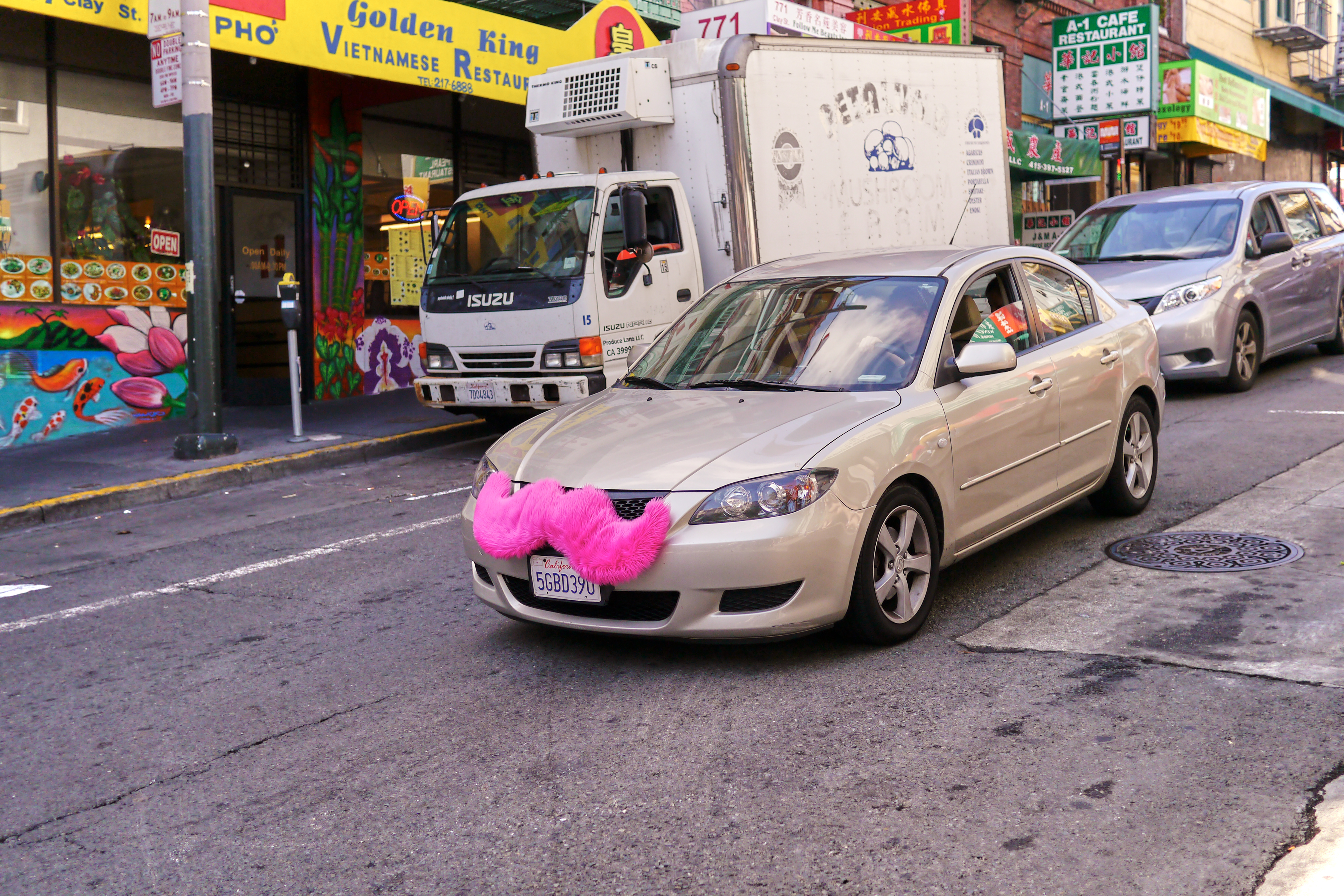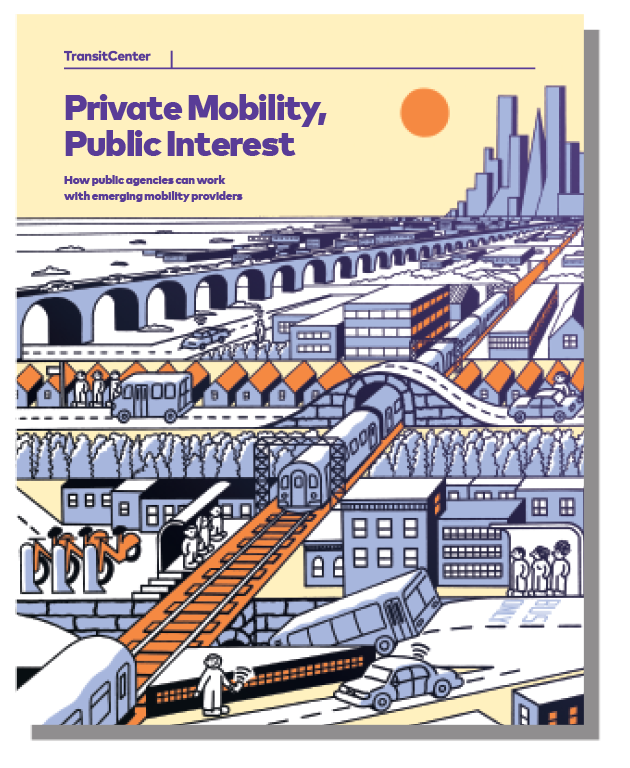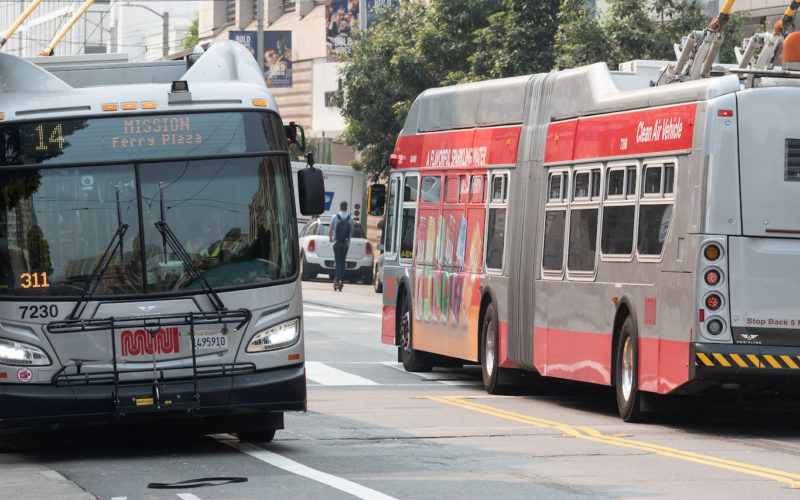
Cities across the country are struggling to ensure that Uber and other emerging mobility providers operate in accord with local transportation values and goals. So far, most cities have been caught off guard by new transportation technologies and corporate disregard for regulation or a negotiated start of service. The result is proliferation of private transportation services without strong understanding or criteria of how they may help — or harm — local transportation ecosystems. San Francisco is taking steps to change that.
It makes sense that the birthplace of many emerging mobility services would be one of the first cities to take a proactive approach to managing them. San Francisco and New York are among the few cities able to estimate the effect of Uber, Lyft, and similar companies’ operations on city traffic. In both cities, TNCs are worsening congestion, especially in the busiest districts. A coherent policy framework is needed to ensure that cities can steer the direction TNCs and other new services take, and have a chance to manage impacts and benefits.
In July, the San Francisco Municipal Transportation Authority (SFMTA) and the County Transportation Authority (SFCTA) teamed up to develop “Guiding Principles for Emerging Mobility Services.” They are designed to enable clear decision-making within agencies when evaluating the new services. San Francisco’s principles state that emerging mobility services must promote equitable access, support sustainability, share data, support transit, ensure fairness to workers, collaborate with the community, and promote public safety. Although measurable indicators have yet to be developed, the principles will help agencies and staffers assess the impacts TNCs have on transit service and other key areas.
By including feedback from key stakeholders in the principles’ development — such as disability, equity, and safety advocates, as well as mobility providers themselves — SFMTA and SFCTA ensured that they reflect local values and needs. The document references municipal power vigorously in case privately-operated services are found to be to be in conflict with such values: “If a service provider does not support these Guiding Principles, SFMTA and SFCTA will work with the service provider to meet the principles, or may choose to limit their access to City resources” (emphasis ours).

As we highlighted in TransitCenter’s 2016 report, Private Mobility, Public Interest, ridesharing services need cities — and city resources. A city or region can and should leverage its assets to encourage private services to comply with local values. Cities and counties control road space, parking, curb access, and more that can be used as carrots or sticks. If incentives aren’t enough, cities can restrict access to public assets when it is determined that a private provider doesn’t serve the public interest.
An example of this dynamic unfolded in Seattle, where the city Department of Transportation agreed to allow car2go to operate and use public parking spaces under the condition that the company provide service across the entire geography of the city, including areas that would likely have been underserved. A similar example is underway in the San Francisco Bay Area, where bike-share operator Motivate is expanding its use of city streets and sidewalks following an agreement to develop a bike-share equity plan with municipal governments and the Metropolitan Transportation Commission, the region’s MPO.
With its guiding principles in hand, San Francisco could take this approach further with its dedicated bus lanes: the San Francisco MTA currently allows taxis to operate in these lanes, but TNCs are barred. The agency could consider granting TNCs access to bus lanes in exchange for compliance with other requests. Alternatively, the agency could allocate more street space to bus lanes and continue excluding TNCs.
 On the Brink: Will WMATA’s Progress Be Erased by 2024?
On the Brink: Will WMATA’s Progress Be Erased by 2024?
The experience of being a WMATA rider has substantially improved over the last 18 months, thanks to changes the agency has made like adding off-peak service and simplifying fares. Things are about to get even better with the launch of all-door boarding later this fall, overnight bus service on some lines starting in December, and an ambitious plan to redesign the Metrobus network. But all of this could go away by July 1, 2024.
Read More What’s Going on With Transit Service at the Seven Highest Ridership U.S. Cities? SF Edition
What’s Going on With Transit Service at the Seven Highest Ridership U.S. Cities? SF Edition
As of March 2022, SFMTA was operating 88% of pre-pandemic service and added back even more service in July.
Read More